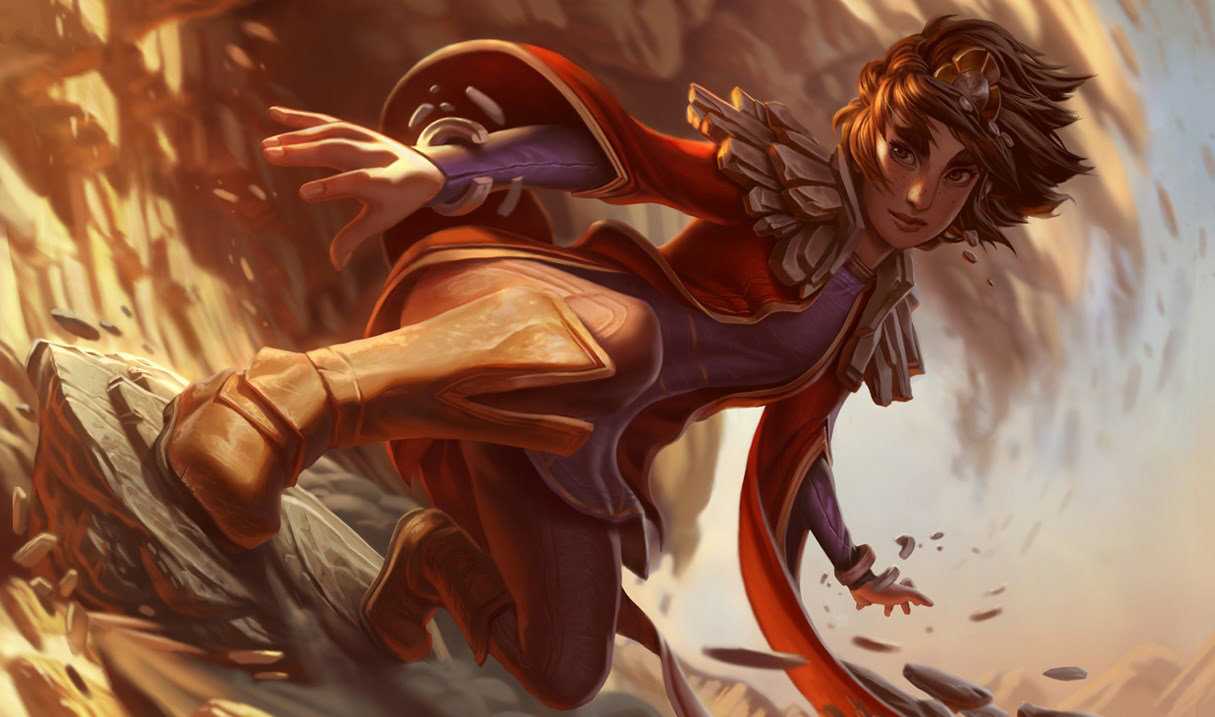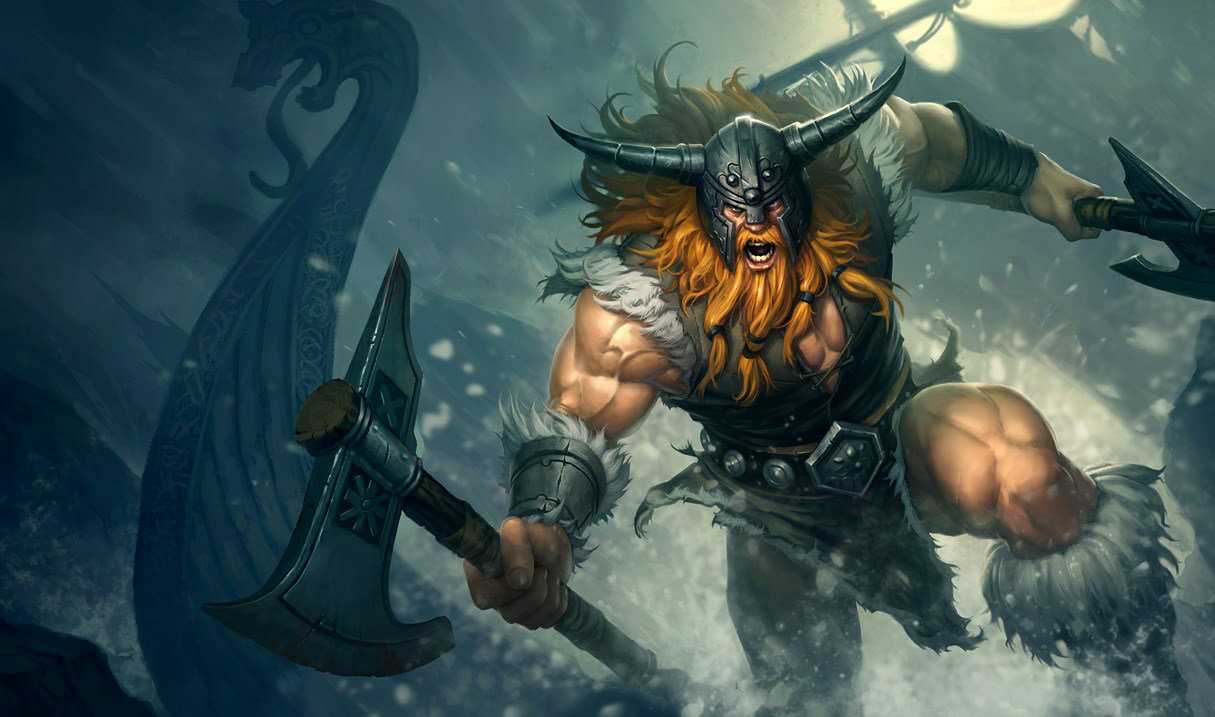Taliyah and Olaf Reworks: What Changed and How to Play Them
The mid-scope updates to Taliyah and Olaf that were released a week ago shook up both champions significantly, but what changed specifically and should you play them?
The mid-scope updates to Taliyah and Olaf that were released a week ago shook up both champions significantly, but what changed specifically and should you play them?
This patch, Riot changed two of the more weathered champions of the roster, in line with a series of reworks that have aimed to bring lower playrate champions up to scuff with the rest of the game. The type of reworks can vary wildly, sometimes affecting graphics, models, and lore (like the Fiddlesticks rework), or just being an ability change with minor VFX updates (like the recent Xin Zhao rework). 12.9 saw Taliyah and Olaf get “mid-scope” updates to help them achieve their original design philosophies and pick up higher play rates.
The focus is always to push the champions towards their design identities – Olaf should feel like a terrifying berserker with incredible threat if he starts landing axes, and Taliyah should feel like a barraging mage that’s always moving while keeping you at arm’s length. Instead, Olaf was a heavily early game champion that played for vampiric healing, and Taliyah was more of an oppressive burst assassin with clunky mechanics. Both champions had pick rates around 1% in the patches leading up to this one, while having been game defining, beloved champions in the past. I’m going to break down exactly what changed with these champions, and how you can effectively bring them into your pool.

In seasons past, Taliyah was mostly a mid laner, and Riot stated that one of their primary goals with this update was to bring her back to the position, where she was consistently more popular. If you’d picked up Taliyah in the past for the jungle, you can continue to play her there – she’s still decent, and her clear has been tweaked to become considerably easier. Her presence in the mid lane, though, is indomitable and should definitely be where most players should look to learn her.
As for what specifically changed, Taliyah’s Q (Threaded Volley) was given AOE damage to better facilitate waveclear and mitigate the frustrating, difficult nature of getting CS with the old version, while decreasing the damage of each stone to compensate. Interestingly, Taliyah’s Q Passive of “Worked Ground” spawning on use of the ability used to be a deterrent, forcing the player to move out of areas where the Q had previously been used to avoid throwing a weak rock instead of the normal volley. Now, the Q within the zone throws a larger boulder, dealing increased AOE damage and slowing considerably while still refunding most of the cooldown, meaning her DPS is now actually higher.
In simple terms, Taliyah used to do more burst damage by landing each individual rock, whereas now she can output a constant barrage of damage; able to alternate between a normal Q and a Worked Ground Q to kite and melt opponents.
The Q changes are the most immediately noticeable, because Taliyah’s entire kit is built around facilitating it – it’s like Irelia Q. This means that changes to her W and E shouldn't be regarded in terms of damage, but rather in terms of how well they set up landing the Q damage over the course of a skirmish. Since these changes significantly increased Taliyah’s potential DPS, her damage on the W knock up has been removed, and the damage on the E has been cut back considerably, especially early.
In return, however, the W (Seismic Shove) has a significantly decreased mana cost (down to 0 at rank 5 from 110), lower cooldown, a larger hitbox, and it comes out faster. This spell just went from a one-time set-up for a burst combo to a threat multiple times in a fight to set up DPS – considering it’s a knock-up that can bring a squishy carry straight into the center of your team, certainly look to use it as much as possible.
The E (Unraveled Earth), too, has been given significant strength. Like the W, the array of rocks now comes out significantly faster, and has been rearranged to go further out from Taliyah instead of off to the sides. Both of these changes are designed to create threat for the true centerpiece of the ability – champions caught within Taliyah’s E that attempt to dash through even a single boulder of it are now stunned. Picking this champion into the likes of Akali, Irelia, or Ahri – champions that tend to terrorize low elo mid laners – just became highly lucrative.
So, what’s the long and short of it? Taliyah probably won’t one shot you with a single Q anymore, preferring to play for a longer fight with DPS, slows, and stuns facilitated by new mechanics. However, her E stunning any dash champions while retaining its slow means that a head-on rush from most assassins is much more difficult, so look to flank around her Unraveled Earth, as it’s the primary tool she’ll use to keep herself safe. As of right now, her numbers are high enough that she’s dominating the mid lane at all levels of play, and she’ll likely be nerfed by 12.11 – if you’re looking for some quick LP, look no further.

Olaf’s changes were less extensive than Taliyah’s, mostly because he’s a significantly simpler champion on the opposite end of mechanical intensity and were more focused on honing in on his identity. Previously, Olaf was heavily indexed into the early game, playing for an incredibly fast clear in the opening stages of the game and brawling anyone he came across. Without a heavy enchanter like Karma or Yuumi to sit on him, he became completely useless after 15 minutes, and relying on vampiric healing of his own, he had begun to drift away from the low-health berserker identity he originally boasted.
Previously, Olaf’s ability to gain life steal and attack speed as he approached lower health was split between his Passive (Berserker Rage) and W (Vicious Strikes → Tough It Out), but has now been combined on his passive, and tweaked to give him max stats at 30% HP instead of 0%. Because the lifesteal he gets, and the items changed around him, he’s not going to be able to heal back up to full in a few seconds of combat anymore, but this system means that he’d hover at 20-40% HP for the entirety of a fight. Before, he’d try to play on double digit HP, and get quickly burst before his healing kicked in
Olaf’s W’s attack speed buff has been nerfed by 10% at all ranks, but he gets an auto attack reset and a shield based on missing health. Since this ability is on a significantly lower cooldown late game and Olaf does pick up some ability haste, he starts to mitigate the lost healing and outpace it, able to remain alive for longer than before, and adding another tool to deal with the burst combos that traditionally counter him.
Olaf’s Q (Undertow) has gotten wider and can be thrown further, but deals less damage early, with a higher cooldown. Considering that the speed of his early clear and the threat of his brawling was based on his ability to instantly throw axes upon picking them up, the new limit of axes at 3 seconds is absolutely gutting for him. To compensate, the ability now shreds armor, a way that Riot has been giving champions dueling or supportive power in fights with champions like Rell. Undertow is now significantly easier to hit, but can only be as strong as Olaf’s damage itself, because it’s an ability designed to slow and keep enemies close.
His ultimate (Ragnarok) is by far the most interesting change – he can now maintain permanent uptime on the ability by landing an auto attack or an E (Reckless Swing). As long as he auto’s the enemy once every 2 seconds, he can maintain bonus AD and invulnerability to CC. The base duration has been halved though, meaning that Olaf can’t ult until he’s already in melee range for fear of being denied any use of it. The ability’s main drawback used to be that Olaf lost resistances in his ulted state, but this is no longer the case, which makes sense considering how many of the changes were nerfs.
Overall, Olaf has gotten stronger – he’s easier to play and curves far better into the later stages of the game, with changes focused on avoiding burst by keeping him at higher HP through sustain. He’s certainly easier, and still operates as a champion that only knows one direction in the fight – forward. The trade-off for his tankier feel is a slower clear, less damage, and far less lifesteal, but it is far more in line with Olaf’s identity, even if it does leave him weaker than the normal rework.
Both Olaf and Taliyah’s reworks hit the mark quite well – both champions feel like they have a purpose and identity within the game. I do expect Taliyah to be nerfed soon, as her barrage style needs to be balanced with more punishing mana costs, but I think the added mechanics work well to undo the “worse Ahri” niche she fell into over the last couple years. Olaf got some much-needed mechanics added to his kit, and finally moved away from the insanely macro-dependent playstyle required by a champion that peaks at 8 minutes into the game.
Thank you so much for reading, and if you take one thing away from this piece – learn Taliyah as soon as possible!